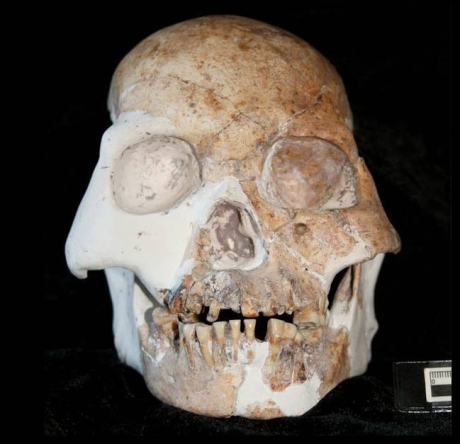End-of-ice-age fossils that combine modern, archaic, and previously unknown features
Eleven thousand year old human fossil skulls have been found in China that,
reports Live Science:
are unusual mosaics of modern and archaic human anatomical features, as well as previously unseen characteristics. This makes them difficult to classify as either a new species or an unusual type of modern human.
For instance, the Red Deer Cave people had long, broad and tall frontal lobes like modern humans. These brain lobes are located immediately behind the forehead, and are linked with personality and behavior.
However, the Red Deer Cave people differ from modern Homo sapiens in their prominent brow ridges, thick skull bones, flat upper faces with a broad nose, jutting jaws that lack a humanlike chin, brains moderate in size by ice age human standards, large molar teeth, and primitively short parietal lobes—brain lobes at the top of the head associated with sensory data. “These are primitive features seen in our ancestors hundreds of thousands of years ago,” Curnoe said.
Unique features of the Red Deer Cave people seen neither in modern nor known archaic lineages of humans include a strongly curved forehead bone, very broad nose and eye sockets, and very flat cheeks that flare widely to the sides to make space for large chewing muscles. In addition, the place where the lower jaw forms a joint with the base of the skull is unusually wide and deep.
All in all, the Red Deer Cave people are the youngest population to be found anywhere in the world whose anatomy does not comfortably fit within the range of modern humans, whether they be modern humans from 150 or 150,000 years ago, the researchers noted.

Look at those bizarre, flaring cheekbones. No human ancient or modern has been seen with such cheekbones. Everything about the skull is strange. And these people lived 11,000 years ago, a mere moment in geological time. Another mystery that will never be solved.
Posted by Lawrence Auster at March 15, 2012 10:13 AM | Send
